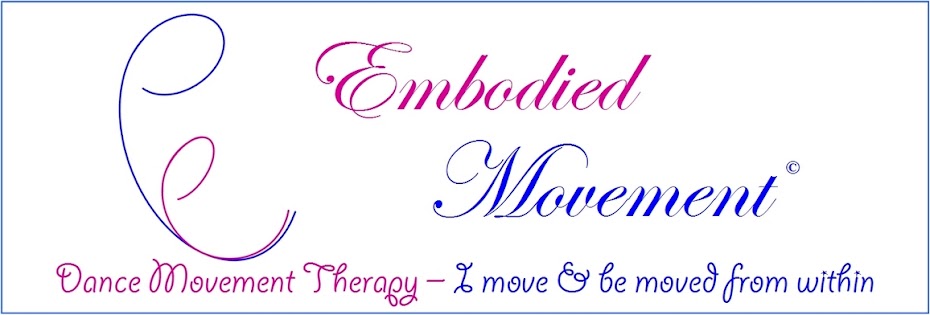Thank you
to all my friends who have been supporting my work as a dance movement
therapist and educator.
A friend who attended my ‘Sharing Dance with your Child’ last year, recently sent me her sharing on her blog and has given me permission to share with you.
A friend who attended my ‘Sharing Dance with your Child’ last year, recently sent me her sharing on her blog and has given me permission to share with you.
The nature
of our work as therapists, we are abide by ethical code, we never disclose
information about our clients we worked with in the therapy settings unless
they personally give us permission to do so. Most of the time, our work can
still be new and unknown with the fact it is confidential. However, this form
of therapy has already been around since the 1960s.
Even in my
workshops/sessions (non-therapy), I always respect my participants and will ask
permission for photo-taking and testimony to be put up on my blog. No doubt, it
is non-therapy, it is to respect each individual’s privacy.
Even I run
workshops/sessions which are non-therapy, the approaches I adopt are based from
the training in dance therapy I had, integrating my skills as a teacher
in combination with other studies. Namely, the approaches I use which can also
be read in my website, ‘Embodied Movement’, such as attunement, containing and holding
environment, boundary, working at where the participants are at, reading
nonverbal cues, being seen, taking into account the emotional and relational
aspects.
Hereby, I
explain how I actually run a session based on the principles, approaches and
concepts of dance movement therapy and it is non-therapy. I share in the next
issue on the difference between a non-therapy and a therapy session.
Every parent
and child is different. Every child is also in different phase and
developmental milestone. In the first session, it is natural that some children
are more prone to observing, waiting, scanning about the environment and people
especially it is new. Giving time and space for both parent and child to adjust
and feel at ease is essential. Sometimes a child may take a longer time to ‘warm-up’.
As a facilitator of the session especially for the first session, nonverbal cues of each individual will provide me information of where they will be at, at the moment. If I feel that the child needs more time, I will always verbalise to the parent that some children will prefer to observe and watch first and take time to warm-up. They can join later when the child is ready. The approach is to hold and contain the space, to make it safe for both the parent and child and the acceptance of the uniqueness of each parent and child.(Sharing of one approaches)
As a facilitator of the session especially for the first session, nonverbal cues of each individual will provide me information of where they will be at, at the moment. If I feel that the child needs more time, I will always verbalise to the parent that some children will prefer to observe and watch first and take time to warm-up. They can join later when the child is ready. The approach is to hold and contain the space, to make it safe for both the parent and child and the acceptance of the uniqueness of each parent and child.(Sharing of one approaches)
My friend,
the mum, she herself has made a conscious choice and is aware of what is likely
to happen. What is beautiful to read is that she constantly reflects and she
has deliberately giving permission to herself and her child that it is all
right to be shy. She has contained and set boundary for her child with the
conscious decision of staying and by being encouraging and supportive towards
her child’s feelings. When I read it, I was very touched and almost to tears - it is an honest, authentic account of the
journey between mother and child.
As a therapist or facilitator, no matter how small the significant process took place, when I witness it, in my heart, I know it is the beginning journey of further deepening of mother-child bonding relationship.
With the trained eye of observing nonverbal cues, I was able to witness what was going on and am honoured to have witnessed the beautiful process between my friend and her child in the 'Sharing Dance with your Child' session.
As a therapist or facilitator, no matter how small the significant process took place, when I witness it, in my heart, I know it is the beginning journey of further deepening of mother-child bonding relationship.
With the trained eye of observing nonverbal cues, I was able to witness what was going on and am honoured to have witnessed the beautiful process between my friend and her child in the 'Sharing Dance with your Child' session.
(My sharing is unedited and it is based on personal reflection.)
Check our programmes for Singapore & Netherlands on our website.
Check our programmes for Singapore & Netherlands on our website.
To share
more photos here with you what actually took place later at the end (permission
given by mother to share) and the blog of the account of the journey in the
session that day.








